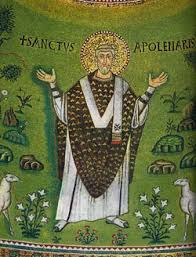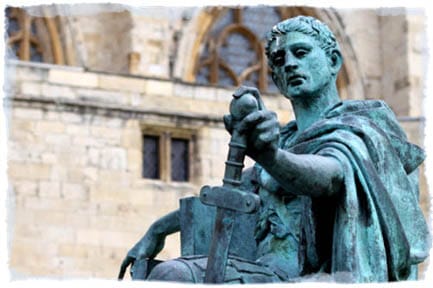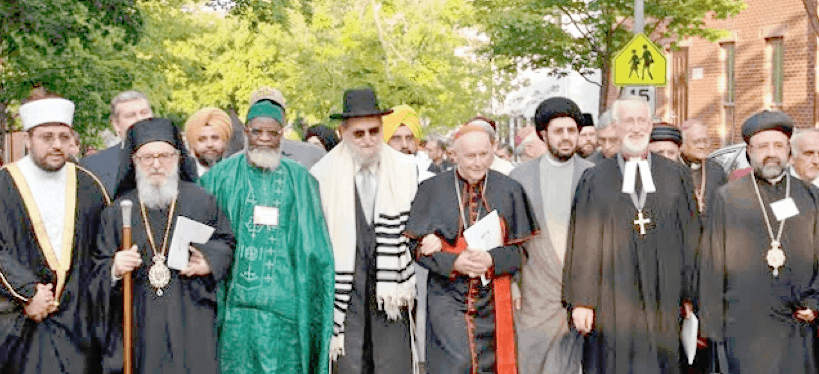This episode is titled “Who Do You Say He Is?”
We begin this episode by reading from the Chalcedonian Creed of AD 451, the portion devoted to the orthodox view of Christ.
We, then, following the holy Fathers, all with one consent, teach men to confess one and the same Son, our Lord Jesus Christ, the same perfect in Godhead and also perfect in manhood; truly God and truly man, of a rational soul and body; consubstantial with the Father according to the Godhead, and consubstantial with us according to the Manhood; in all things like unto us, without sin; begotten before all ages of the Father according to the Godhead, and in these latter days, for us and for our salvation, born of the Virgin Mary, the Mother of God, according to the Manhood; one and the same Christ, Son, Lord, only begotten, to be acknowledged in two natures, inconfusedly, unchangeably, indivisibly, inseparably; the distinction of natures being by no means taken away by the union, but rather the property of each nature being preserved, and concurring in one Person and one Subsistence, not parted or divided into two persons, but one and the same Son, and only begotten, God the Word, the Lord Jesus Christ; as the prophets from the beginning declared concerning Him, and the Lord Jesus Christ Himself has taught us, and the Creed of the holy Fathers has handed down to us.
Compare that to the simple words of the Apostles Creed quoted by many Christians from memory 300 years before.
I believe in . . . Jesus Christ, God’s only begotten Son, our Lord: Who was conceived by the Holy Ghost, born of the Virgin Mary, suffered under Pontius Pilate; was crucified, dead and buried. He descended into hell. The third day he rose again from the dead. He ascended into heaven and sits at the right hand of God the Father Almighty. From thence he shall come to judge the living and the dead.
Quite a difference. What caused the Church to draw such exacting language regarding who Jesus was between the early 2nd & mid 5th Cs? That’s the subject of this and the next episode. Along the way, we’ll see of interesting developments in the Church and learn of some colorful characters.
In the 16th chapter of Matthew’s Gospel, we read of a time near Caesarea Philippi in Galilee when Jesus asked His disciples, “Who do people think I am?” After hearing what the popular talk was, Jesus asked them “Who do YOU say I am?” That set the stage for Peter to confess his faith in Jesus as Messiah.
We might think Jesus’ affirmation of Peter’s reply would put an end to the controversy. It was only the beginning. That controversy raged over the next 500 yrs as Church leaders wrestled with HOW to understand Jesus.
We’ve already touched on this subject in previous episodes. I’ve mentioned we’d return to deal with it specifically in a future episode. This is it; and here’s why we need to slow down a bit and take our time reviewing the history of the controversy over how to understand Who Jesus was. We need to camp here for a bit because this issue consumed a good amount of the Church’s intellectual energy during the 4th & 5th Cs.
Today, we accept the orthodox view of the Trinity & the Nature of Jesus as God and Man readily; not realizing the agony the Early Church Fathers endured while they labored over precisely HOW to put into just the right words what Christians believe. One theologian said Theology is the fine art of making distinctions. Nowhere is that more clear than here; in our examination of how orthodox theologians described a Christ.
The first great Ecumenical Council was held at Nicaea in 325 at the urging of the Emperor Constantine. Some 300 bishops representing the entire Christian world attended to hammer out their response to Arianism; the idea that Jesus was human, but not divine. As the Council dragged on, Constantine, itching to get back to the business of running the Empire, pressed the bishops to adopt a Statement that affirmed Jesus was both God & man. But many of the bishops left Nicaea discontented with the wording of the Nicaean Creed. They felt it was imprecise. It failed to capture the full truth of Who Jesus is. This lack of support for the Nicaean Creed opened the doors for many of the later controversies that would wrack the Church. The Council of Chalcedon 125 yrs later tightened up the language on Nicaea but didn’t fundamentally alter the Creed. Let’s take a look at the time between Nicaea & Chalcedon . . .
Sometimes, in an attempt to bring clarity to a complex situation, we over-simplify. I run the risk of doing that here. But for the sake of brevity, I beg the listeners’ indulgence as I chart the path from 325 to 451.
Following Nicaea, with the affirmation that Jesus is both God & Man, the Church had to first harmonize that with the Biblical reality there’s ONE God, not Two. And wait, someone asked, what about the Holy Spirit; doesn’t the Bible says He’s also God? The classic, orthodox statement of the Trinity, that God is 1 in substance or essence, but 3 in persons wasn’t something everyone immediately agreed to. It wasn’t like at the Council of Nicaea they took a vote and agreed Jesus is both deity & humanity. Then someone raised their hand & said, “Isn’t there just one God?”
Yes. à Well, how do we describe God now? They waited in silence for 14 seconds, then someone said, “How about this: We’ll say God is one in substance & 3 in person.” They all smiled & nodded, slapped that guy on the back and said, “Good one. There it is; the Trinity! Our work here is done. Let’s go for pizza. I get shotgun.”
No; it took a while to get the wording right. What made it difficult is that they were working in 2 languages, Greek & Latin. A formulation that seemed to work in Greek was hard to bring over into Latin, and vice versa.
It took the work of the Cappadocian Fathers, Basil the Great of Caesarea, his younger brother Gregory of Nyssa, and their close friend Gregory of Nazianzus who worked out the wording that satisfied most of the bishops and framed the classic, orthodox doctrine of the Trinity. The Council of Constantinople was called in 381 to make this Trinitarian formulation official. This was just a year after Emperor Theodosius I declared Christianity the official State religion.
So, with that piece of important theological business out of the way, they moved on to the next topic. And this is where it gets messy.
If Jesus is both God & Man – how are we to understand that? Does He have 2 natures, or does 1 of the natures trump the other? Or is there a 3rd way: Did the human & divine natures fuse into a new, hybrid nature? And if Jesus IS a hybrid, do Christians get to drive in the chariot-pool lane?
Lots of different camps put forward their scheme and fought hard to see their doctrinal formulation become the official position of the Church.
The Council of Ephesus in 431 came out with a position that elevated 1 nature, while the Council at Chalcedon 20 years later altered that by affirming Jesus’s 2 natures.
It became obvious to church leaders after the Council at Constantinople that the turmoil they saved in solving the problem of the Trinity was just added to the Christological problem that rose next.
To understand how this issue was settled, we need to take a look at the rivalry that grew between 2 churches; a rivalry sparked in large part by Christianity being liberated from persecution and elevated to the darling of the State. Those 2 churches were Alexandria & Antioch.
The debate over how to understand the Person & Natures of Jesus was staged in the Eastern Empire. The West wasn’t as involved because Rome simply did not see as much challenge on its belief in the dual nature of Christ. So while it wasn’t the scene of so much theological turmoil, it did play an important part in how the controversy was settled.
Political rivalry between Alexandria and Antioch had been going on for some time. Being in the East, both churches vied with each other to provide Bishops to Constantinople, the New Rome & political center of the Eastern Empire. Getting one of their Bishops promoted to the capital meant bragging rights and could result in additional power & prestige for the Alexandrian or Antiochan sees. Two bishops from Antioch that were drafted by Constantinople were John Chrysostom, who we’ve already looked at, and Nestorius, who we will.
In addition to their ecclesiastical jealousy, was the very different cultural and theological traditions in play at Antioch and Alexandria. The church at Antioch had a closer tie to the Jewish roots in Jerusalem. It had a stronger tradition of rational inquiry. It was at Antioch that church leaders had dug deeply in the OT to find many of the great types that pointed to Jesus. They studied Scripture through the lens of literal interpretation, rejoicing that God became Man in the Person of Jesus.
The Church at Alexandria was different. It grew up under the influence of philosophical Judaism as seen in Philo and passed on to scholars like Clement & Origen. The Alexandrians had a tradition of contemplative piety, as we might expect from a church near the Egyptian desert where the hermits got their start and had been such stand-out heroes of the Faith for generations. In interpreting Scripture, the Church at Alexandria developed and was devoted to the allegorical method. This saw the truest meaning of Scripture to be the spiritual realities hidden in its literal, historical words.
While the leaders at Antioch saw Jesus as God come as man, at Alexandria they agreed Jesus was a man, but His divine nature utterly overwhelmed the human so that He effective had only 1 operative nature; the divine.
The differences between Antioch and Alexandria had already surfaced in their different approaches in refuting the error of Arianism. That they never reconciled them set the stage for all the acrimony to ensue over the debate on Jesus. The Arians made much of the NT passages that seemed to suggest Jesus’ subordination to God the Father. They liked to quote John 14: 28, where Jesus said, “the Father is greater than I,” & Matt 24: 36, “No one knows . . . not even the angels in heaven, nor the Son, but only the Father.” In reply to the Arians, the theologians at Alexandria argued such passages were properly applied to the Son of God in his incarnation. The theologians of Antioch took a different route, referring such passages not to Jesus divinity, but to his humanity. That may seem like splitting semantic hairs; I say poh-tay-toe; You say poh–tah-toe – but our friends in Antioch and Alexandria thought it a big deal and major difference. Really, both approaches provided a defense of the Nicene theology, a refutation of Arianism, and a framework for interpreting the Gospels.
This is where I need to simplify lest we get into the minutiae of theologians with too much parchment, ink and time. In summary, the Alexandrian approach recognized Jesus as God but tended to diminish His humanity. The Antiochan approach readily embraced Jesus’ humanity but had a hard time explaining how His human and divine natures related to each other.
Let me try to make this more practical; maybe something you’ve grappled with. Have you ever pondered how Jesus could be tempted in all points as we are, as it says in Heb 4:15, yet as God, it was impossible for Him to sin? Sometimes you’ll hear it put this way; Was Jesus REALLY tempted, since as God, He COULDN’T sin? As a man, he had the potential to sin. But as God, He couldn’t. So was His experience of humanity genuine? If you can relate to the quandary those questions pose, you get an idea of the challenge the Antiochans faced.
The difference between Antioch and Alexandria on how to understand Jesus was why Arianism & the Nicene Creed kept coming up in the Christological controversies dominating the 4th & 5th Centuries. Each side thought the other was selling out to Arianism.
The battle between the 2 churches came to a head in the 5th C in the war that took place between 2 men; Bishop Cyril of Alexandria and Bishop Nestorius of Antioch who became Bishop of Constantinople.
But that’s the subject for our next episode.






Hi, Lance. I’ve been listening since the last version of the podcast, and I’m actually enjoying going through and listening to the restructured episodes (I didn’t think I’d enjoy listening to a lot of the same content again, but your presentation has changed and it’s a nice refresher course). I’ve learned so much, and I’m thankful for the time you take to create these. I’d love to visit your church if I’m ever out in Cali, I’d be glad for the opportunity to thank you in person. May God continue to use you to educate and lead his people.
p.s. Listening from Harrisburg, Pennsylvania.
Thanks so much Daniel.
And I’d like to meet you as well. So, yeah – if you’re ever out this way, drop in.
Lance